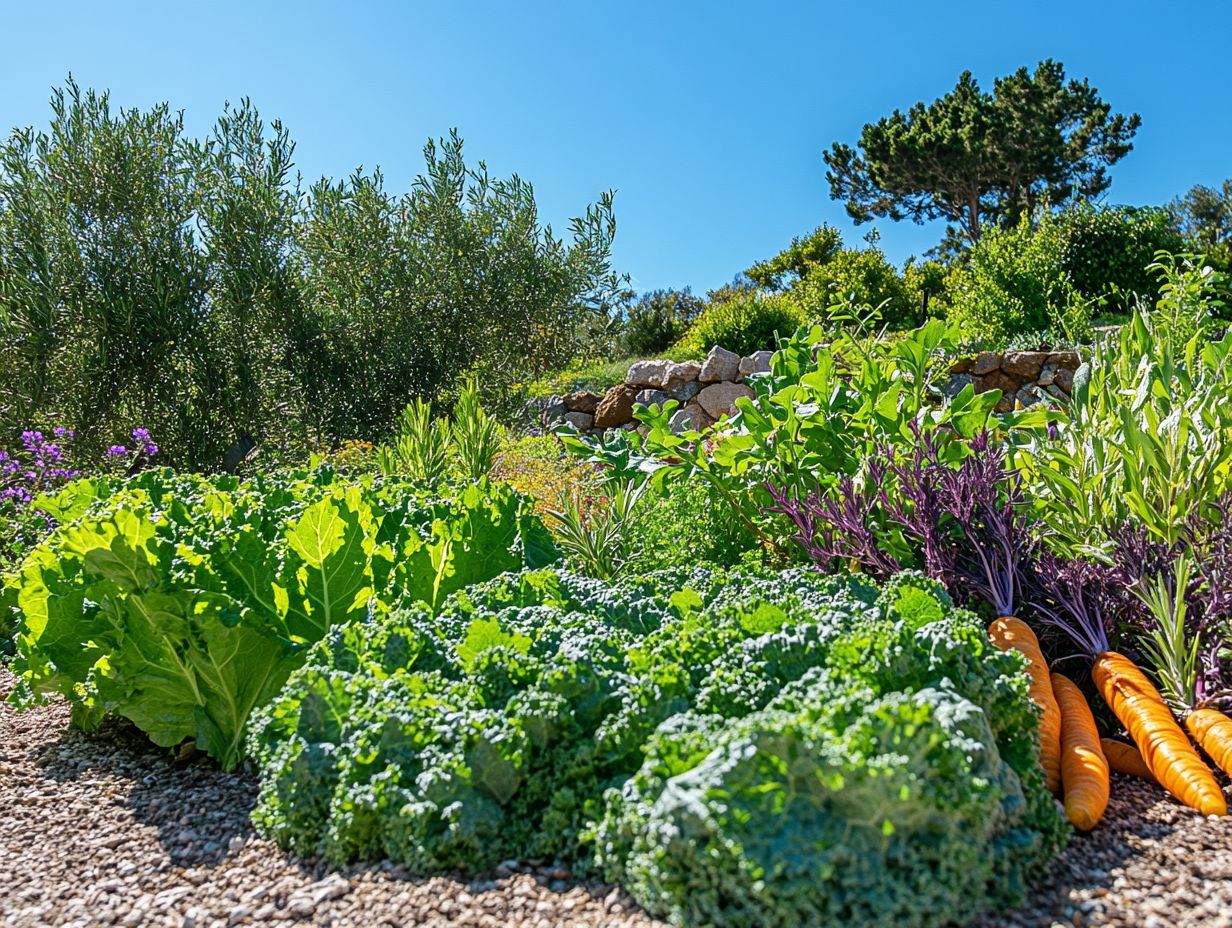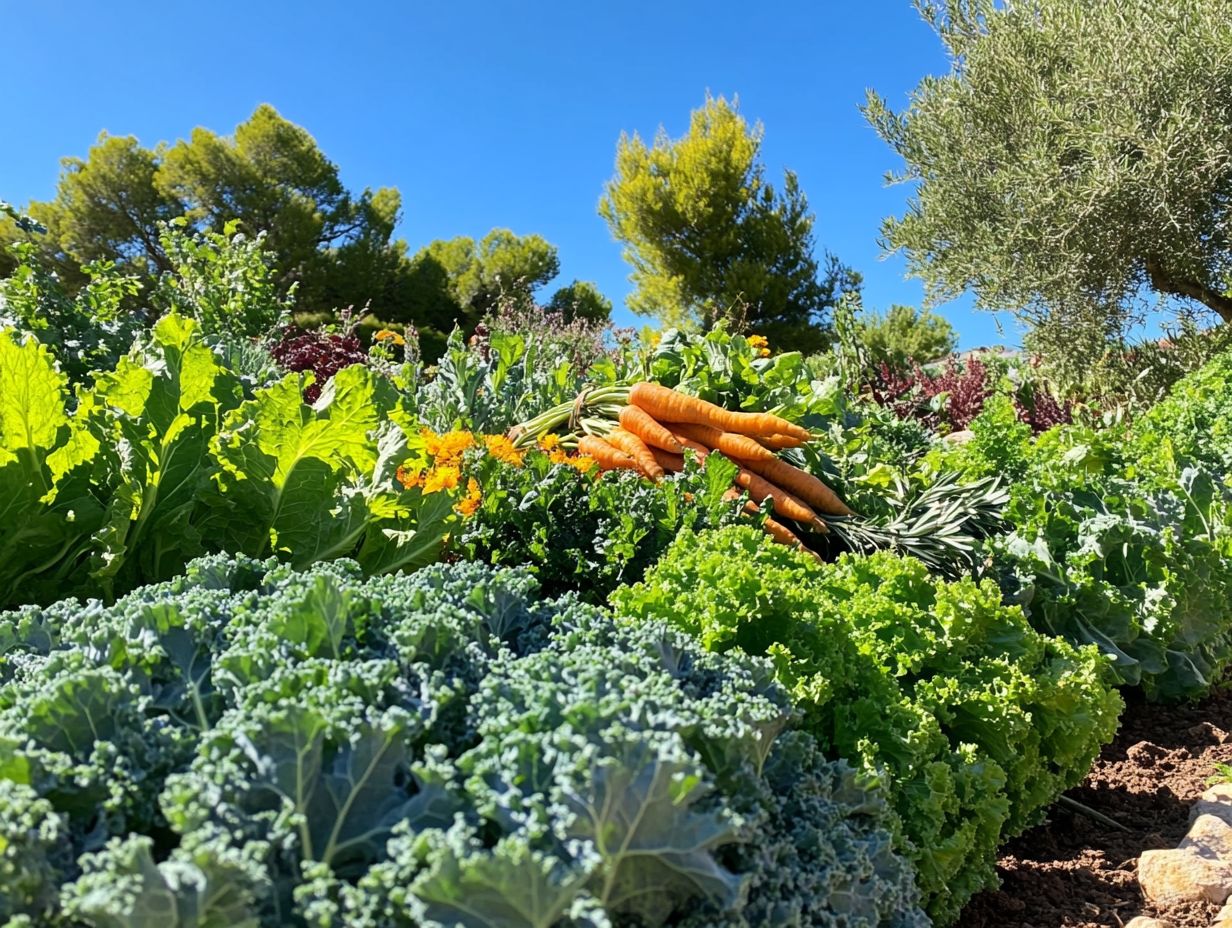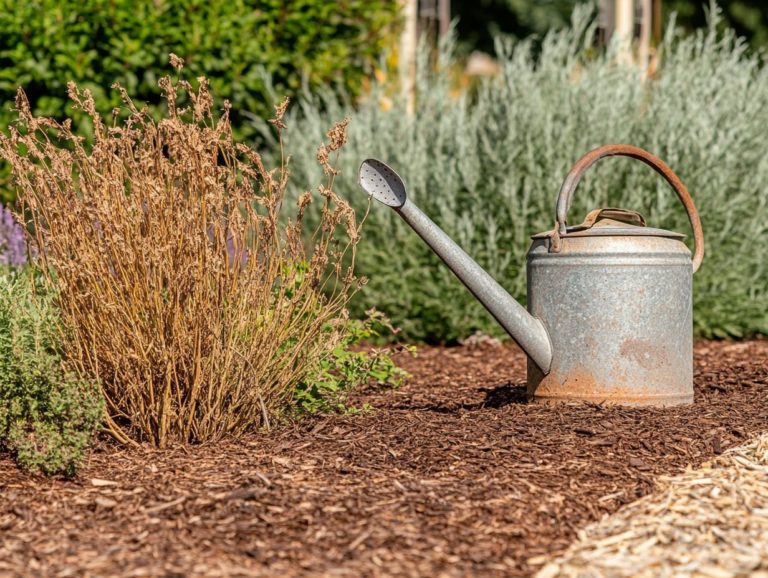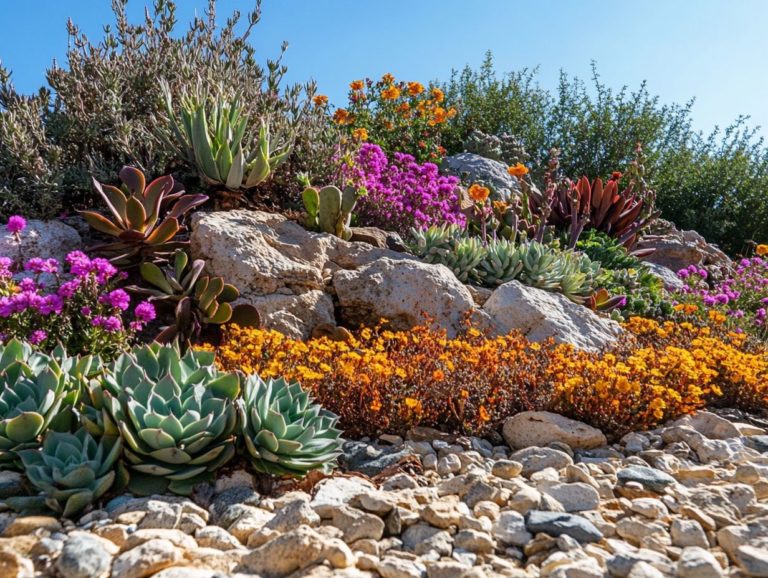What Are the Top Drought-Resistant Vegetables?
Drought-resistant vegetables are essential in tackling climate change and water scarcity. These resilient plants thrive in dry conditions and offer numerous environmental and financial benefits.
This article explores the advantages of these robust crops, highlights standout varieties, and shares key cultivation tips. You’ll also find delicious recipes that celebrate these nutritious vegetables!
Discover how to boost your garden’s sustainability while enjoying tasty meals!
Contents
- Key Takeaways:
- Benefits of Growing Drought-Resistant Vegetables
- Environmental and Economic Advantages
- Top Drought-Resistant Vegetables
- Types and Characteristics
- Tips for Growing Drought-Resistant Vegetables
- Recipes Using Drought-Resistant Vegetables
- Frequently Asked Questions
- What are the top drought-resistant vegetables?
- Why is it important to choose drought-resistant vegetables?
- Which factors make a vegetable drought-resistant?
- Can I grow drought-resistant vegetables if I live in a humid climate?
- How can I ensure the success of my drought-resistant vegetable garden?
- Are drought-resistant vegetables less nutritious than other types of vegetables?
Key Takeaways:

- Growing drought-resistant vegetables benefits both the environment and your wallet, requiring less water and maintenance.
- Top varieties, like tomatoes, peppers, and eggplants, have deep roots and thick leaves.
- For success, use mulching, proper watering, and select the right types for your climate.
What Makes These Plants Drought-Resistant?
Understanding drought resistance is crucial for gardeners facing tough conditions, especially in drought-prone areas. Drought-resistant varieties thrive with minimal water, showcasing remarkable resilience perfect for sustainable gardening!
By learning about these plants, you can optimize moisture retention in your soil, promoting healthy growth even under the summer sun. This knowledge is invaluable for anyone looking to increase their harvest during dry spells.
To fully enjoy the benefits of drought-resistant plants, recognize their unique adaptations. Many, such as succulents and native wildflowers, have deep roots that access moisture beneath the surface. Their leaves often feature a waxy coating to minimize water loss.
Certain varieties shine in different climates; for example, lavender flourishes in arid regions, while zinnias thrive with minimal water. By embracing these strategies, you can cultivate a resilient garden ecosystem that withstands hot, dry conditions.
Benefits of Growing Drought-Resistant Vegetables
Growing drought-resistant vegetables offers numerous benefits for you and the environment. As water scarcity becomes a significant concern, these resilient crops thrive in low-water conditions, playing a vital role in sustainable gardening.
The economic advantages can lead to higher yields and lower costs, making these hardy varieties a smart choice for homegrown food production!
Environmental and Economic Advantages
The environmental and economic advantages of cultivating drought-resistant vegetables are truly remarkable. These benefits are especially important for those who want to maintain a sustainable and productive garden in the face of changing climate conditions.
By selecting varieties that thrive on minimal water, you can increase your harvest while also playing a vital role in water conservation efforts, effectively easing the pressure on local water resources.
The economic benefits are equally compelling. With reduced irrigation costs and lower maintenance, growing your own vegetables becomes a financially savvy choice.
Growing drought-resistant crops such as Swiss chard, kale, and select heirloom tomatoes can significantly enhance soil health. These plants often develop deeper root systems, improving soil structure and boosting organic matter. This natural resilience against pests and diseases further reduces the need for artificial fertilizers and pesticides, making your gardening practices more environmentally friendly.
As these robust crops flourish in arid conditions, watch your yields soar as these crops thrive! You can reinvest these yields into your gardening efforts, paving the way for a more resilient and eco-conscious approach that champions both environmental sustainability and economic viability.
Top Drought-Resistant Vegetables

When you re contemplating the best drought-resistant vegetables for your garden, it s vital to delve into a diverse array of varieties celebrated for their resilience in heat and dry conditions. By choosing these hardy crops, you not only secure a fruitful harvest but also embrace sustainable gardening practices that conserve water and improve soil health.
Varieties such as Swiss chard, okra, and Jerusalem artichoke truly shine with their exceptional adaptability and low water demands. These make them ideal choices for your summer gardening endeavors.
Types and Characteristics
Understanding the various types and characteristics of drought-resistant vegetables is essential for you as a gardener looking to maximize crop yields while minimizing water usage. These vegetables possess unique traits that enable them to thrive under less-than-ideal conditions, such as deep root systems that tap into soil moisture or waxy leaf surfaces that reduce evaporation.
Varieties like asparagus, squash, and peppers each have distinct growth habits and seasonal needs. This positions them as excellent candidates for your drought-tolerant garden.
In addition to these popular choices, consider resilient options like sweet potatoes, which feature sprawling vines that not only suppress weeds but also thrive in poorer soil types. Okra is renowned for its sturdy growth style that withstands heat and drought.
With such rich diversity, these vegetables not only conserve water but also elevate your sustainable gardening practices. For instance, tomatoes often flourish in sandy soils, while eggplants require a bit more nutrient care yet still shine in terms of drought resistance.
This variety offers you planting versatility, making it simpler to select crops tailored to your specific environmental conditions.
Tips for Growing Drought-Resistant Vegetables
Successfully growing drought-resistant vegetables demands a blend of strategic planning and a firm grasp of best practices suited for cultivating these resilient crops, especially in challenging climates.
By employing effective watering techniques, optimizing soil health, and utilizing mulch, you can create the perfect conditions for your plants to thrive, even during the sweltering summer months.
Understanding the specific irrigation needs of each vegetable variety like zucchini and corn can significantly enhance their establishment and overall growth.
Start your journey towards a sustainable garden today! Choose your favorite drought-resistant vegetables and watch your green space thrive, no matter the weather!
Best Practices for Successful Growth
Implementing best practices for growing drought-resistant vegetables is essential for maximizing your yields and ensuring a vibrant garden. Techniques like effective watering strategies, soil management, and companion planting can significantly boost the resilience and productivity of your crops.
Understanding the unique needs of drought-tolerant varieties such as arugula, chili pepper, and pole beans helps you create an optimal environment for growth and harvest.
Using sufficient moisture during dry spells is crucial. Mulch retains soil moisture and reduces evaporation. Preparing your soil by incorporating organic matter improves its structure and enhances its ability to capture water, giving your plants access to vital nutrients.
Employing strategic planting techniques, such as alternating rows of compatible vegetables, allows you to maximize your garden space and resources. Companion planting enables certain crops to naturally repel pests while nourishing one another, promoting a thriving ecosystem.
This approach fosters a successful garden and boosts sustainability. You’ll feel even more rewarded as your garden flourishes!
Recipes Using Drought-Resistant Vegetables

Exploring recipes that feature drought-resistant vegetables unveils a treasure trove of nutritious meal ideas, celebrating the richness of your homegrown harvest.
Vegetables like squash, peppers, and melons not only deliver essential nutrients but also elevate the flavors of your culinary creations. By integrating these resilient crops into your cooking, you’re savoring healthy and sustainable meals while enjoying the seasonal abundance of your garden.
Delicious and Nutritious Meal Ideas
Creating delicious meals with drought-resistant vegetables can inspire you to embrace the flavors and benefits of your harvest. Picture hearty soups featuring Swiss chard and zucchini or vibrant salads with fresh peppers and arugula. These recipes celebrate sustainable cooking and make the most of your crops.
Explore various preparation methods like grilling, roasting, and saut ing. You’ll quickly see how versatile these vegetables can be. For instance, a simple stir-fry with okra and eggplant can be ready in under 20 minutes, providing a colorful dish packed with fiber and antioxidants.
Consider whipping up a roasted bell pepper and quinoa salad, which takes about 30 minutes to prepare, delivering a protein-rich meal loaded with vitamins A and C.
How about a classic ratatouille made with summer squash and tomatoes? Let it simmer for about an hour for a hearty side that’s both nutritious and rustic. Each of these dishes breathes life into your meals while emphasizing the significance of sustainable and healthy eating choices.
Frequently Asked Questions
What are the top drought-resistant vegetables?
The top drought-resistant vegetables can tolerate dry conditions and require less water to grow. Some examples include tomatoes, peppers, eggplants, beans, and leafy greens like kale and spinach.
Why is it important to choose drought-resistant vegetables?

Choosing drought-resistant vegetables conserves water and reduces the risk of crop failure due to lack of water. It saves money on irrigation and is more sustainable for the environment.
Which factors make a vegetable drought-resistant?
Drought-resistant vegetables typically have deep root systems, thick leaves or skins to retain moisture, and the ability to close their stomata (pores) to reduce water loss. They have adapted to dry climates over time.
Can I grow drought-resistant vegetables if I live in a humid climate?
Yes! You can definitely grow amazing drought-resistant vegetables in your humid garden. Some varieties may not perform as well as they do in drier conditions.
However, there are still many options available for you to choose from.
How can I ensure the success of my drought-resistant vegetable garden?
Choose the right plants for your climate. Provide enough space and good soil.
Using mulch will help retain moisture. Regular watering during the initial growth stages is also helpful.
Are drought-resistant vegetables less nutritious than other types of vegetables?
No, drought-resistant vegetables are not less nutritious than other types. Studies show they may have higher nutrient levels.
This is due to their adaptation to harsh growing conditions, making them a valuable addition to any organic garden.






